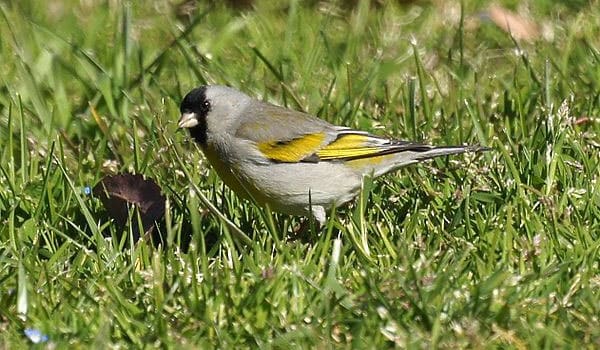The ovenbird is a warbler that looks like a small speckled thrush. A good look at the ovenbird’s head will help you differentiate it from larger thrushes and same-sized waterthrushes. The wide, white eye ring is the first clue.
The waterthrushes lack this, having instead a white stripe (supercilium) running from above the eye to the back of the head. Several species of brown-backed thrushes have eye rings that are not as pronounced. These birds are also much larger and have heavier bills than the ovenbird.
Thrushes hop and feed, at one moment still, then dashing; the ovenbird walks methodically. The ovenbird has neat “stripes” of spots running down its breast, while the thrushes are more randomly speckled underneath. While not always visible, the ovenbird’s black-bordered, orange crown patch is a diagnostic field mark.
Listen for
Although spotting the forest-dwelling ovenbird takes patience, the bird’s TEAcher-TEAcher-TEAcher-TEAcher song is distinctive and rings through the woods in spring and summer. Call note is a loud chep!
Find it
This deep forest bird only thrives where forests remain in large blocks, probably because if clearings are nearby, there are more nest predators and parasitic brown-headed cowbirds. Ovenbirds nest in mature deciduous or mixed deciduous and pine forests in the northern part of the Southeast, but they appear throughout the region during spring and fall migration.
Most winter in Mexico, Central America, and on Caribbean islands. Forests that host nesting ovenbirds have a thick layer of dry leaf litter beneath them, providing the birds with feeding and nesting opportunities.
Feed it
The ovenbird quietly chugs along the leafy forest floor, walking and looking for insects, spiders, and other invertebrates (such as earthworms and snails) among the leaves littering the ground.
Nesting Behavior
This bird is named for its domed nest, which usually sits on the ground and is so well camouflaged with dead leaves that you can easily walk past without noticing it. Although leaves help conceal the nest, the female ovenbird constructs this structure using grasses, bark, and other materials. There is a side entrance for stealthy exit and entry. Inside, the female lays four or five eggs and incubates them for up to two weeks. Both parents feed the young. They leave the nest after about a week, but they are still fed by the adults for about two weeks afterward.
WOW!
Territorial male ovenbirds sing a nighttime flight song during spring and summer. He flies above the treetops, singing loudly, then drops back into the dark woods.




